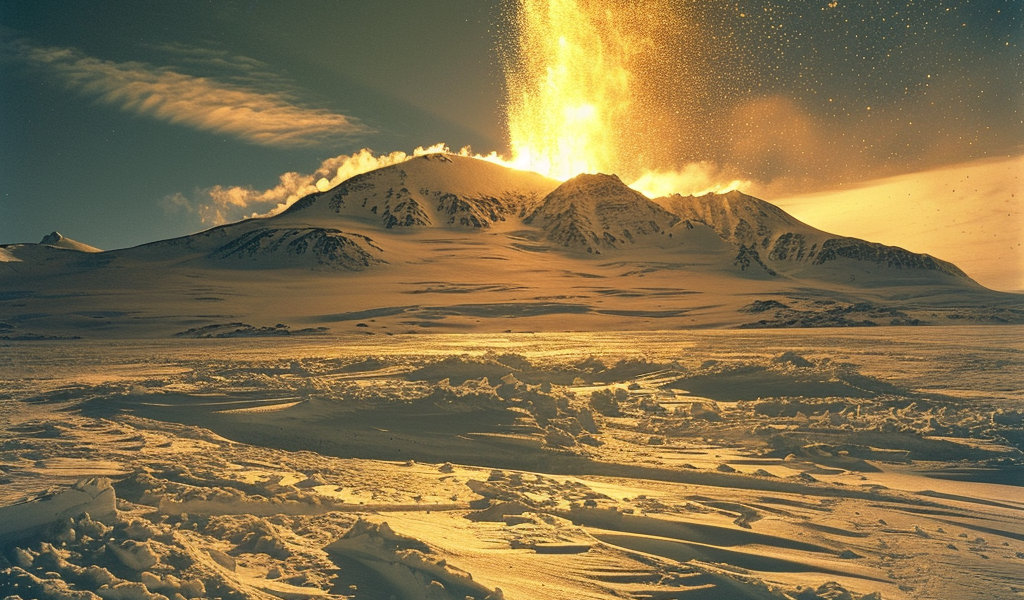An incredible natural phenomenon has been discovered in Antarctica, where an active volcano on Mount Erebus is spitting out $6,000 worth of gold dust into the air each day, as revealed by NASA’s Earth Observatory.
Mount Erebus, the tallest active volcano on the continent with a summit reaching 12,448 feet, is known for its daily emission of gas pockets containing 80 grams of crystallized gold. Named after the personification of darkness in Greek mythology, this volcano has been erupting since it was first discovered by Captain Sir James Clark Ross in 1841 on Ross Island.
Researchers have found gold particles in the volcanic gases emitted by Mount Erebus, as well as in the surrounding snow. The origin of these gold deposits is believed to be volcanic rock, with lava carrying the gold particles into the air. The volcano spits out gold flecks measuring between 0.1 and 20 micrometers in the volcanic gases and 60 micrometers in the surrounding snow.
Antarctica is home to 138 active volcanoes, with Mount Erebus being a significant landmark due to a tragic event in 1979 when Air New Zealand Flight 901 crashed into its side, resulting in the loss of all passengers and crew.
The remarkable discovery of gold emission from Mount Erebus has even reached as far as 621 miles from the volcano, as reported by the National Aeronautics and Space Administration (NASA) Earth Observatory. Despite regularly emitting plumes of gas and steam, and occasionally spitting out rock, the volcano has been continuously erupting since 1972.
Conor Bacon of Lamont-Doherty Earth Observatory at Columbia University notes that Erebus also contains a ‘lava lake’ at one of its summit craters. While the idea of a volcano spewing gold daily is intriguing, its impact on the global gold market is expected to be minimal unless significant changes occur in the conditions for collection and processing.





